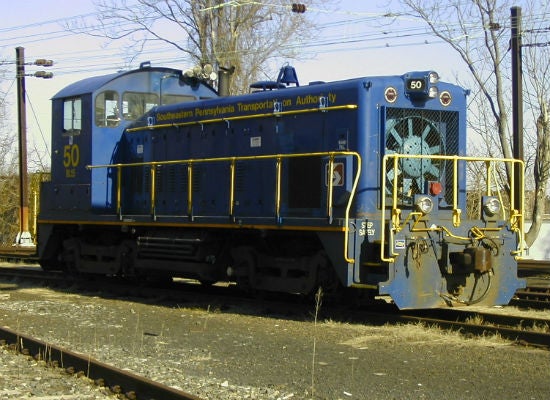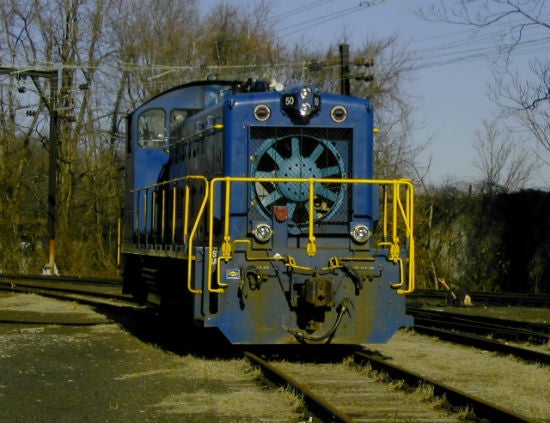SEPTA to repower locomotive engine, reduce fuel consumption and emissions
Residents near Wayne Junction Station will breathe easier thanks to a SEPTA project to replace the outdated diesel engine on a 1950s-era locomotive with a new, fuel-efficient engine and emissions reducing diesel particulate filter [DPF].
The engine replacement, or repower, and DPF could save the locomotive, one of six SEPTA uses for maintenance and repair, as much as 6,278 gallons of fuel annually, as well as cut nitrogen oxide emissions and reduce overall particulate matter [PM] emissions by up to 90 percent.
The project received a $1.2 million Diesel Emissions Reduction Act grant through the Environmental Protection Agency, and could be completed in the summer of 2013. The repower will strip the locomotive almost to chassis level and replace the former engine with two generator set engines, or “GenSet” which turn a generator, and a DPF, an exhaust after-treatment that significantly reduces emissions. The repower will bring the locomotive from Tier 0 EPA emissions standards to Tier 3 off-road vehicle standards.
The “GenSet” technology allows more precise control of the engines so that they can be stopped and started as necessary. This allows one engine to be turned off or power to be balanced more efficiently between the two. It also means that if one engine is offline for repairs or maintenance, the locomotive can still run.
Bill Jones, of the EPA’s Region 3 which includes Pennsylvania, said the difference in air quality will be visible to the naked eye.
With a 90 percent PM emissions reduction, “what’s coming out of the stack is going to be noticeably different,” he said.
Each dollar invested in diesel emission reduction yields $10 to $20 in benefits, Jones said, and the community around Wayne Junction Station, where this locomotive is primarily kept, will notice those human and environmental health benefits.
The repower also has the potential for significant fuel savings. Moving from Tier 0 to Tier 3 has an estimated 40 to 65 percent reduction in fuel consumption. For this locomotive that means an estimated 6,278 gallons in annual fuel savings.
Conservative estimates predict the engine will last 10 to 15 years, but Jones said he believes the lifespan will be closer to 15 to 20 years. Given the fuel savings, Jones said projects like this can see a payback in as few as nine years, though he noted this project has the added cost of the DPF.
SEPTA received the $1.2 million DERA grant as part of the FY 2011 grant cycle and initially expected the locomotive to be repowered by mid-2012. Delays in the bidding process have resulted in a project extension.
Jones said SEPTA now plans to secure a contract by the end of the calendar year and to complete the repower in the summer of 2013.
As more repowers of this kind are done around the country, Jones said, he hopes to see project costs decrease and turnaround times increase.
He said he thinks SEPTA will complete more locomotive repowers in the years to come as the project fits into the organization’s sustainability efforts.
“The more [repowers] we get on the tracks and show that they’re working really well, the better.”
WHYY is your source for fact-based, in-depth journalism and information. As a nonprofit organization, we rely on financial support from readers like you. Please give today.








